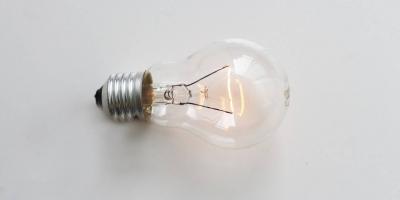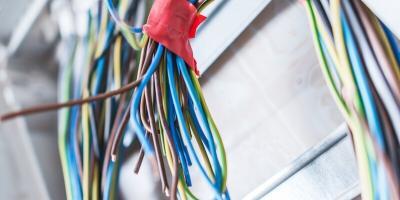Households and commercial spaces all across Sydney are aware that their appliances, devices, and electrical systems are subjected to a variety of electrical faults during their operation.
An electrical fault is a flaw or an error within your power system that results in an abnormal current flow. If left overlooked, these minor faults may lead to electrical failure of your appliances or worse, start an electrical emergency.
Moreover, there are a lot of factors that may cause electrical faults within your wiring system, including lightning strikes, stormy weather, physical damage, and poor electrical installation, among other things.
Hence, people should be more informed regarding the problems surrounding their power lines and protect you from emergencies. That said, here are the different types of electrical faults for households and establishments, as well as what you can do to prevent them.
Open Circuit Fault
An open-circuit fault occurs because of failures in one or more conductors in your electrical system. This is most likely caused by a failure within the circuit breaker or a melted fuse/conductor.
Additionally, open-circuit faults are also known as series faults. These types of flaws disrupt the symmetry of the currents between wires, supplying your appliances with an imbalance amount of electricity. While it is considered a minor flaw, an unbalanced current may overload an appliance, thereby causing severe damage to your equipment.
Short Circuit Fault
A short circuit fault, or a shunt fault, happens when the electric current travels a shorter distance than the established path. This occurs when two conducting leads or wires touch and poses the threat of a potential fire or electric shock.
Furthermore, short circuit faults are the most common and serious type of electrical fault as it produces sparks or arcs, which could both start a fire almost immediately. We identify these faults as:
- Classic Short Circuit Fault ‒ When a live wire touches a neutral wire, causing a cracking sound and a lot of sparks
- Ground Fault ‒ Occurs when a live wire comes in contact with a grounded component or a metal case. This type of short circuit fault has fewer chances of starting a fire, but it raises a significant threat of electric shock.
Moreover, several electrical faults that may lead to a short circuit, including:
- Faulty Wire Insulation ‒ Wiring insulation could deteriorate and wear off over time, exposing the metal leads and copper wires
- Poor Appliance Wiring ‒ Short circuit could occur in outlet plugs, power cords, and the internal circuit board of appliances and devices
- Loose Electrical Connections ‒ Electrical fixtures loosen up over time, which increases the likelihood of metal components to come in contact with each other
Symmetrical and Unsymmetrical Faults
While people classify electrical faults as open or short circuit faults, we can also classify them as to whether symmetrical or unsymmetrical.
Symmetrical Fault
Symmetrical faults happen when all wires or phases of an electrical system has a balanced current displacement. In other words, when all the phases are simultaneously open or short-circuited.
Additionally, symmetrical faults rarely occur in real-life application than unsymmetrical faults. Also, two types of symmetrical fault include Line to Line to Line (L-L-L) and Line to Line to Line to Ground (L-L-L-G).
Furthermore, the rare occurrence of this fault falls under two to five percent (2-5%) of total system faults. But still, it could cause serious damage to your equipment even though the system remains in a balanced condition.
Unsymmetrical Fault
The most common electrical fault for both open and short circuit faults is an unsymmetrical fault. This happens when an unbalanced current flows between your electrical wiring system.
An unsymmetrical fault also comprises both open and short circuit faults, excluding those mentioned under the symmetrical fault. Besides, the three types of unsymmetrical faults from a short-circuit condition include:
- Line-to-Ground (L-G)
- Phase-to-Phase (L-L)
- Double Line-to-Ground (L-L-G)
Statistics also show that around 70-80 percent of electrical faults present in power systems are unsymmetrical faults. That said, safeguarding your household from all sorts of electrical fault is essential.
Protecting Your System From Faults
A proactive decision and a small amount of investment could go a long way in protecting your household and family from electrical emergencies.
Installation of Protective Devices
Don’t wait for an electrical fault to develop before you take action. Clearing your system from faults will also use various protective devices such as RCDs and circuit breakers.
Some of the most efficient and reliable electrical protective devices include:
- Switchboards
- Circuit Breakers
- Residual Current Devices (RCDs)
- Whole House Surge Protectors
In order to ensure a safe and efficient installation of protective devices, it would be best to seek a qualified level 2 electrician.
Conclusion
Electrical faults come as open circuit fault and short circuit fault. Generally, a poorly insulated wiring system and repeated use of equipment will cause an electrical fault. On the other hand, it is highly preventable.
Even during normal operating conditions, an electrical fault may develop under plain sight ‒ and you won’t know until emergencies take place. For your electrical installation and repairs, trust only the reliable Level 2 electricians at Gordon Powers.
Our certified Level 2 electricians are capable of diagnosing and isolating any electrical fault inside and out. We have the tools and experience to identify hotspots to prevent short circuits and other electrical emergencies. Wherever you are in Sydney, we’ll be in and out within the hour.
Call us at (02) 9199 7480 for an appointment or inquire with us via email.










